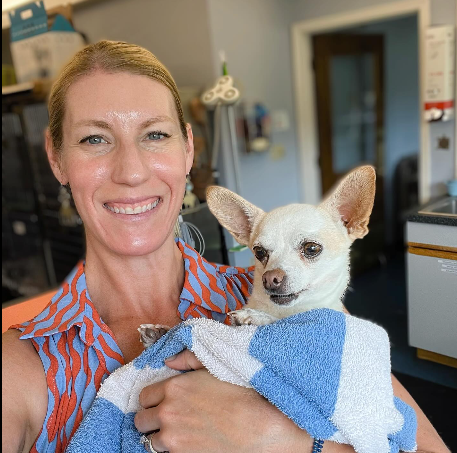Our dog companions, with their curious and occasionally mischievous nature, can find themselves in unexpected predicaments. One such concern that often raises alarm among dog owners is when their furry friends decide to indulge in a not-so-dog-friendly snack—silicone rubber. As responsible pet caregivers, it’s crucial to be equipped with knowledge on how to handle such situations calmly and efficiently. In this exploration, we’ll delve into the potential risks associated with a dog consuming silicone rubber, understanding the signs, and outlining the steps to take in ensuring the well-being of our four-legged friends. Join us as we navigate the intricacies of handling an incident where Fido has taken an unintended interest in the world of silicone rubber.
Key Takeaway
When your dog ingests silicone rubber, prompt action is essential.
Assess the quantity ingested and your dog’s condition.
Monitoring for symptoms of discomfort or blockage is crucial.
If concerned, contact your veterinarian for guidance.
Be aware of signs of potential intestinal blockage.
Silica gel is generally non-toxic but can vary in quantity. Consult a vet if unsure.
Managing a Condition Where Your Dog Consumes Silicone
When your dog ingests silicone rubber, it’s essential to take immediate action to ensure their safety and well-being. Here’s a step-by-step guide on how to handle this situation:
Determine the amount of silicone rubber that your dog consumed
Finding out how much silicone rubber your dog consumed is the first step. When evaluating the possible risk, this knowledge is essential. In case the amount is minimal, your dog might be able to eliminate it on its own. It’s a more dangerous scenario if the amount is significant or if it seems like the silicone rubber could produce a blockage.
Check the temperature of your dog
It is advisable to take your dog’s temperature after determining how much silicone rubber your dog has consumed. Keeping an eye on your pet’s temperature can provide important information about their general health because abrupt changes, particularly a high fever, may point to a problem with their underlying health. The usual range of a dog’s body temperature is 38°C to 39.2°C, or 100.5°F to 102.5°F. This range of temperatures is regarded as healthy and corresponds to how your dog’s body normally functions.
It’s a clear sign that you should get in touch with your veterinarian if you discover that your dog’s fever is higher than normal. To guarantee your dog’s health and safety, they can offer advice on the best course of action and whether more testing or care is required. Whenever in doubt or if your dog is exhibiting alarming symptoms, it is recommended to get advice from a veterinary specialist.
Induce vomiting (if advised)
It is best to approach the process of making a dog throw up under the careful supervision of a veterinarian or a pet poison control center. Due to a number of important considerations that need to be made, it is not advised for pet owners to take this significant step without consulting a specialist.
In certain poisoning or ingestion circumstances, inducing vomiting may be a potentially life-saving action; nevertheless, only a veterinary practitioner should make this judgment. The knowledge and experience of a veterinarian guarantees that the right action is done, considering the particular situation and reducing the dangers involved in the procedure. If you think your dog may have consumed something toxic, you should contact a veterinarian or a pet poison control hotline right once. For the greatest results, you should heed their professional advice.
Observe the Dog behavior
If you think your dog may have swallowed silicone rubber or any other foreign material, you must keep an eye on their behavior. Your dog’s behavior can provide important information about their health and the possible effects of ingesting anything.
A useful method for determining your dog’s health and the possible effects of ingesting foreign items, such as silicone rubber, is to closely observe their behavior. It is important to take seriously any signs of discomfort, restlessness, pain, or strange behavior as these may point to an emergency requiring medical intervention as well as veterinary care. The safety and well-being of your dog are of utmost importance, and you can play a big role in guaranteeing those things by keeping a close eye on them. Do not hesitate to consult a veterinarian for professional advice if you notice any alarming indicators.
Immediate Visit the veterinarian
See a veterinarian right away if your dog is exhibiting alarming symptoms, you believe they may have swallowed a large piece of silicone rubber, or you have any concerns regarding their health. Your veterinarian is qualified to do a physical examination, request diagnostic procedures like X-rays, and administer the best course of care.
Warning Signs of Intestinal Blockage in Dogs
It’s critical to stay alert for any signs of an intestinal obstruction, which can happen when a foreign item like silicone rubber is swallowed. It is crucial for your dog’s wellbeing to recognize the warning indications of an intestinal obstruction, as it is a severe worry.
Vomiting: Frequent or persistent vomiting, which may or may not include fragments of the ingested material.
Loss of Appetite: A sudden disinterest in food or reluctance to eat.
Weakness: Your dog may become lethargic or weak, showing a lack of energy or enthusiasm.
Nausea: Signs of nausea may include excessive drooling or retching.
Diarrhea: Frequent and potentially bloody stools.
Straining or Inability to Defecate: Difficulty in passing stool, sometimes accompanied by visible discomfort or straining.
Are Dogs Toxic From Silicone?
In general, silicone rubber is not thought to be harmful to dogs. On the other hand, swallowing excessive amounts or sharp shards of silicone rubber may cause gastrointestinal distress, inflammation, or even obstructions. The more concerning aspect of silicone rubber consumption is not its chemical toxicity but rather its physical impacts.
What Would Happen If My Dog Consumed Silica Gel?
When consumed in moderation, silica gel—which is frequently used in packaging as a moisture absorbent—is normally safe for dogs to consume. Even if your dog consumes a greater quantity, it’s a good idea to speak with your veterinarian for advice, particularly if you have any worries about their health or if the silica gel was a component of a more complicated or substantial item.
Conclusion
In the event that your dog consumes silicone rubber, you should treat the issue with caution, close monitoring, and, if required, veterinarian assistance. It’s critical to put your pet’s safety and wellbeing first by being knowledgeable and responding appropriately when necessary. For advice relevant to your dog’s condition and circumstances, always visit a veterinarian.
Po

Dr. Allison Kramer is a seasoned veterinarian with a Master’s degree in Animal Behavior and over 10 years of experience specializing in canine health and behavior. Her expertise in positive reinforcement training and holistic care enhances the well-being of dogs and fosters strong pet-owner relationships. For expert advice and valuable insights, follow Dr. Kramer on Instagram @dr.allisonkramer.





